This article was co-authored by Star of Texas Veterinary Hospital. Star of Texas Veterinary Hospital is a team of four veterinarians based in Austin, Texas. Star of Texas Veterinary Hospital offers medical assessments, dentistry, ultrasonography, flea control, radiology, and cardiology services to dogs, cats, and pocket pets. Star of Texas Veterinary Hospital is Austin’s first Fear Free Certified Practice and was awarded "1st Runner Up in Culture" by the 2020 Best of the Best Austin Official Choice Awards. They were a Best of the Best winner in Austin's Official Community Choice Awards. Star of Texas Veterinary Hospital's veterinarians are members of the American Association of Feline Practitioners, the Texas Veterinary Medical Association, and the American Veterinary Medical Association.
There are 11 references cited in this article, which can be found at the bottom of the page.
This article has been viewed 133,084 times.
You want a pet, but you aren't sure which kind to choose. Keeping a pet is a big responsibility, and it can entail a long-term commitment. Each animal has its own physical and emotional needs, and you must be prepared to fulfill those needs. Do your research and understand the implications. Choose carefully!
Steps
Researching Common Types
Fish and Other Aquatic Pets
-
1Think about getting an aquarium. Choose an aquatic pet if you enjoy a tranquil pet that does not require constant physical interaction. Beware that not all fish are easy to care for. Some fish types will live happily in a low-maintenance aquarium or pond, whilst others like goldfish, can get ill if the pH balance is off. Goldfish are also more susceptible to illnesses like white spot, so make sure to research the species you want before you set up an aquarium. Fish are often thought to have a calming effect: simply watching them swim around may help reduce anxiety and stress.
-
2Make sure that you have space for an aquarium. Most aquatic pets need a tank at least as large as five gallons, with an extensive filtration system. Consider whether you can commit to regular aquarium-cleaning sessions. Cleaning an aquarium requires you to clean out pumps and filters, wash the entire structure of the tank, and prepare good-quality water for your aquatic pet to live in.
- Most fish need plenty of space to swim around. The larger the fish (and the more fish), the larger the tank you'll need. Research the tank size requirements for any aquatic creatures that you're thinking about getting.
Advertisement -
3Research the various types of aquatic pets. Choose between freshwater or saltwater fish; low-activity animals like starfish; shelled creatures like crabs and sea snails; or even less common pets like eels and shrimp. Read about various aquatic creatures, their needs, and the feasibility of keeping them.
- Consider recreating a specific aquatic ecosystem. Read about which fish to put together in a tank. You don't want your creatures to fight, eat each other, or compete for resources!
Birds
-
1Research common pet birds. Consider an avian pet if you'd like an intelligent, life-long partner in crime. Birds are by far the longest living domesticated pet. Large birds can live for decades while smaller birds can live up to two years. They are also highly intelligent and are easy to care for. They don't require much attention from you but will need environmental stimulation through toys or interaction with you. Birds can also be very nurturing and even show empathy. Before considering an avian pet, you should ask yourself a few questions:
-
2Make sure that you have enough space for a cage. The larger the bird, the larger the cage it will need. Certain birds—especially, but not limited to, birds of prey&mash;need plenty of opportunities to fly around and stretch their wings. Consider the ethical implications of keeping a bird in a cage, and decide whether you'd ever be able to let it fly free.
-
3Be aware of the time commitment. Some birds can live for multiple decades, and you shouldn't adopt a long-lived bird unless you're prepared to care for it. Some birds, especially large parrots, have long life spans. African Grey parrots, for example, live an average of 50 years. Budgies, on the other hand, only live 5 to 15 years. Don't choose a bird that you're not willing to make a lifetime commitment to.[1]
- On a more regular scale, you'll need to commit to regular cage cleaning and bird grooming. Cages need to be cleaned weekly, and birds should be misted every few days. They also need at least several hours a day of interaction with a human.
- A lone bird can get bored easily. It can develop bad habits of over-grooming and over-eating which can be life-threatening if left untreated. Toys and appropriate avian companions can help mitigate this issue, but they still require interaction with the family.
-
4Be prepared to be vigilant. You'll need a keen sense of observation to get your bird prompt medical attention in the case of an illness. Many avian pets are prey species. As such, they have evolved to not show signs of illness until the problem becomes deadly.
Reptiles
-
1Think about getting a reptile. Understand that having a reptile as a pet is very different from keeping a mammal or any other domesticated pet. You'll need to have extensive knowledge about your pet: everything from adaptation, behavior, and the environment, to nutrition, camouflage, and reproductive strategies. You'll also need to research any laws regarding the particular species in your state.[2]
-
2Understand the risk. Are you prepared to care for a pet that could be dangerous to you? Reptiles like some snakes and lizards can become dangerous if not properly handled. Some of these creatures—particularly venomous reptiles, or large and predatory reptiles—can pose a real risk to you, your family, and your other pets if they get loose. This is your responsibility.
-
3Prepare to meet the needs of a reptilian pet. Reptiles are coldblooded, mostly carnivorous creatures, and you will need to cater to various environmental requirements. Make sure that you know what it means to care for a reptile!
- Make sure that you're able to cater to the dietary needs of your reptile. Most reptiles are carnivores or omnivores, and will need to eat other animals like mice, crickets, rabbits, and birds. You can usually find these foods already killed and prepared at a local pet store, but some reptiles may require live food.
- Understand the thermal needs of your reptilian pet. Reptiles are coldblooded and will need an environment that is warm, enclosed, and properly sized. This can become an expensive endeavor, and it is known to surprise new reptilian owners. Since reptiles can be purchased quite cheaply, people are unwilling to spend money to meet their very specific needs.
- Consider whether you're ready to care for a reptile for many years. Some reptiles can live for up to 40 years – or even as much as 100 years.
- Make sure that you have enough space. Snakes and some lizards can grow to very large sizes (over ten feet long), whilst others stay very small (under one foot long), so once again it is important to decide what type you want before you set up an enclosure.
Rodents
-
1Care for a pet rodent. This can be a great option if you want an active, small, and relatively inexpensive pet. Common pet rodents include hamsters, guinea pigs, rats, mice, gerbils, and chinchillas. Beware that some rodents, like guinea pigs and rats, cannot live on their own and will need an either same sex or neutered companion. Other rodents, like hamsters, live best on their own. Research the different rodents to see if the one you want will need a friend. Some rodents (such as mice and rats) can even be trained to follow commands and perform tricks.[3]
-
2Check whether you have space for a cage. Many rodents need quite large cages, for instance rats need a minimum of 2 square feet per rat, according to the ASPCA. Cages can also get quite expensive, so building your own is a common endeavor.
-
3Understand the time commitment. You'll need to commit to the daily and weekly upkeep of your rodent's cage. Cages need to be deep-cleaned regularly, and litter boxes must be emptied out daily.
- Are you ready to care for a rodent that may live up to three years? For some, three years can be a long time. For others, three years is much too short. The grief of losing a pet is inherent to the joy of owning a pet.[4]
-
4Learn how to handle rodents. Some rodents like mice, hamsters, and rats are quite fragile and need careful handling. That means learning how to properly hold and pick up your pet while avoiding injury to it.
Cats and Dogs
-
1Consider getting a dog or cat. These large, social, mammalian pets can be a very rewarding choice if you are able to give them a lot of attention. Cats and dogs are the most popular type of pet. They are also typically very social and high-energy, and they more attention than almost any other domestic animal. Understand what it means to own a dog or a cat.
-
2Gauge your access to the outdoors. Dogs need to be outside, and an enclosed yard can greatly benefit the quality of life for your dog. Large dogs, especially, need regular physical activity in order to stay healthy.[5] Cats can also go outdoors, and a safe neighborhood or enclosed yard can meet their needs. Factor this availability into the type of dog or cat that you adopt!
-
3Make sure that you can provide a stable and nurturing home. Certain breeds of dogs develop behavioral problems if left alone for extended periods of time. The top reason for aggression found in cats is caused by boredom or lack of environmental stimulation.
- Who will look after your pet when you go away for a while? Check for the availability of boarding kennels and pet sitters in your area, if you do not have friends or family who are willing to care for your pet when you are away. If you're out of the house a lot, a dog or cat may not be the right pet for you.
- Do you move around a lot? Dogs and cats can become stressed if they are moved from home to home. This can cause long term behavioral problems.
-
4Understand the commitment. Ask yourself whether you're ready to care for a dog or cat for more than 10 years. Dogs and cats can live up to an average of 15 years, depending on breed. Some dogs and cats have been recorded to live for as long as 25 years. On a smaller scale, dogs and cats require regular and intensive interaction with humans or other dogs and cats.[6]
- Most dogs have to be walked everyday, and have to go outside to relieve themselves. Cats also need plenty of exercise and social interaction.[7]
- Are you getting an adult pet or a young pup or kitten? If it's the latter, make sure the baby is old enough to be separated from the mother. Younger animals need a lot of care and affection. Keep in mind, that they require more nurturing and a lot of looking after. This means major time commitment on your part.
-
5Look over your budget. You'll need to pay for food, toys, and health products. You may need to front additional costs like obedience training, grooming, and medical care.[8]
- Can you pay for obedience training? Having an unruly animal can play havoc with your life. Even if you decide not to attend a formal obedience program, you should be prepared to doing some reading and apply necessary discipline for basic training.
- Bigger animals are going to cost you more in the long run since they eat more food and may have larger vet bills.[9]
- Can you afford yearly vet bills and unexpected vet bills from accidents or illnesses? Surgeries and emergency medical procedures can cost thousands of dollars.[10]
Choosing the Right Pet for You
-
1Research common pets. Every pet is unique, but a certain species and breed will have distinct characteristics that can help you determine what kind of pet is right for you. You can go online; visit your local library or bookstore; or speak to the staff at an animal shelter or pet store. Learn about the common traits, characteristics, and needs of common pets and their varying breeds. If you already have a few types of pet in mind (e.g. cat, rabbit, and iguana), ask about these animals first.
- Some cat breeds (like the Siamese) are very affectionate. They can't be left alone for long periods of time. Left alone, they can become depressed or develop separation anxiety. If you work long hours or can't be home all the time, you might want to reconsider owning a Siamese cat and look for another breed of cat.
- Climate can affect what kind of breed or species of pet you'd like to own. Most pet birds, for instance, do best in temperatures around 70 °F (20 °C).[11] If you live in a colder environment, it's important to keep your pet bird indoors or another warm space. Many escaped birds die from exposure to the cold.
- Each breed of a species has its own unique grooming needs. A long-haired cat will need to be groomed daily, while some short-haired cats may only need grooming once a week.
-
2Choose between a young pet or a mature pet. The needs of an animal change with each stage of their life. Many new pet owners want to buy or adopt young pets such as puppies and kittens, but fail to realize that having baby animals can be difficult, time-consuming, and can become expensive. Some new pet owners may also become disappointed when their baby animals grow up into adult animals. In the United States of America, over 7.6 million pets enter animal shelters every year.[12] Many of them are strays and many of them are surrendered by pet owners for a variety of reasons. One unfortunate reason pet owners surrender their pets is that they realize they no longer want to care for their matured pet because it is no longer cute. So when you're thinking of adopting or buying a pet, it's important to ask yourself if a baby animal or mature animal is better for you.
- Young pets: Young pets need lots of attention and training. For dogs and cats, they will need to be house trained. For smaller animals like rodents and birds, constant attention and feedings will need to take place as you will be taking on the role of surrogate mother. Some young pets can also damage your home as baby animals often play bite, chew or scratch furniture, or soil your furniture. Some young pets will also need to be fixed and vaccinated. If you have young children in the home, you'll need to make sure your pets and children play safely together as both child and baby pet are quite fragile. As well, a young pet's temperament or personality may change as they become older.
- Mature pets: Adult pets can be difficult to bond with, especially if they had been previously mistreated or abused. It may take longer for an adult pet to warm up to you or get settled in their new environment. However, an adult pet's personality will remain the same. So what you see and observe initially about the pet, is probably what you'll be experiencing when you bring the pet home. Plus, an adult pet may need little to no obedience training. Adult dogs and cats can play and interact with young children safely. In shelters, adult pets are often never given a second chance, so adopting a mature pet means you're saving a life.
-
3Consider where you will get your pet. There are many options and ways to get a pet. Some people are given pets by neighbors, friends, and family. Some adopt and some breed and buy. Some pets enter the lives of people all on their own, showing up at doorsteps or found as strays. Many people find their pets through:
- Animal shelters. Millions of pets are euthanized each year because they were never adopted or the shelter could no longer support the amount of animals coming in each year. Adopting from a shelter potentially means saving an animal from euthanasia or a lifetime behind bars. The cost of adopting a pet from a shelter is quite reasonable and all pets are vaccinated and fixed before they're allowed to be adopted out. Shelter staff also know the animals very well and can help you choose the right pet for you.
- Breeders. It is extremely important that you choose a pet from a responsible and reputable breeder that is knowledgeable about the breed of pet they are selling. Breeders should always provide plenty of space, food, and water for their animals. They should also have properly socialized their animals before allowing them to be purchased and should never allow an animal to be purchased before they are properly socialized. Pets from breeders can be quite expensive, but is a good resource if you are looking for purebred pets.
- Pet stores. Some pet stores act as adoption agencies that work with local shelters to help adopt out pets. They may also care for and sell their own pets, allowing you to view their pets' living conditions.
Deciding Whether You're Ready for a Pet
-
1Be ready to change your lifestyle. Owning a pet is a big responsibility, and it will change certain aspects of your life. You will need to adapt your daily routine, your home environment, and your financial situation to suit your pet's needs.
- A busy schedule can make it hard to keeps a pet that needs a lot of attention. Some dogs, horses, rats, and cats need to be exercised by taking them out on walks or setting aside time to play with them.
- Pets often require established feeding times. You will need to remember to feed your pet or come up with alternative ways to ensure your pet has had enough food every day. This is especially the case if your lifestyle includes being away from home for long periods of time.
- It can be stressful to own certain pets if you travel a lot or work long hours outside of the home. Large, active pets like cats and dogs need to socialize and be socialized. Being home alone all day can negatively impact your pet's emotional and physical well-being. You may need to hire a pet-sitter, bring your pet to a "pet daycare," or choose a pet that can be home alone for long hours.[13]
-
2Make sure that everyone in your home is ready for a pet. Even though the pet may be yours, it's necessary that everyone in your home agrees to having a pet. A pet, especially one that is young or has special needs, can be stressful and hard to handle for everyone in the home. If you have a large family with many children or you're in a living situation with many people, it's important you make sure everyone in the home is ready to have a pet as well.
- Find out if you or anyone is allergic to a certain animal. Moderate allergies to pets can be controlled but severe allergies can pose dangerous health risks. If you are uncertain if you or someone has pet allergies, visit an allergist to help you determine if anyone is allergic to a certain animal.
- Having pets when there are young children or pregnant people in the home can be difficult. A pet may experience high levels of stress with little children around or the addition of a new pet can put a strain in the lives of a family that is expecting.
-
3Make sure your home is pet-friendly. If you're renting or living in an apartment, condo, or town home, it's very likely your building will have rules as to what kind of pet you are able to have. Many buildings allow smaller pets but not larger ones. Some may not allow certain animals regardless of its size and some will allow pets if a damage deposit is paid. Check with your landlord or building management for rules about the specific species, breed, and size of pet that you're allowed to have.
- Get permission in writing and have your lease or contract updated. Word of mouth or permission granted vocally is often unreliable. Written proof can come in handy if you run into problems later on.
- Check your municipal, county, or provincial laws if you're planning to own an exotic animal or if you are importing an animal. If you're importing an animal from outside the country, check with airlines and Customs or Port Authority on the necessary paperwork and quarantine procedures for animals coming from the source country. These regulations can change between borders without notice at any given time, depending on health regulations.
- Some pets need large open spaces to live in. Most pets can live in small homes as long as they have the opportunity to go outside or have plenty of indoor stimulation through play or interaction with others.
-
4Save money. Keeping a pet can be more expensive than you realize. Make sure that you are in a financially stable situation. You must be able to afford to take care of a pet's needs: its food, supplies, toys, and healthcare. You may need to save for:
- Vet appointments. With any pet, regular health checks done by your veterinarian is important. If you're thinking about owning an exotic animal, you may need to find specialized veterinarians that are experienced in caring for them.
- Vaccinations and other preventive medications. Certain pets need to be vaccinated to prevent the spread of common pet diseases. You may also choose to protect your pet by giving them monthly preventative medications that protect them from fleas, heartworm, and other parasites.
- Neutering. Unless you're a breeder, most pets that are mammals like dogs, cats, horses, and rats, will need to go through an operation to be neutered or spayed. Having your pet fixed helps keep your pet healthy by preventing unwanted pregnancies and other health concerns such as cancer. Neutering also improves your pet's quality of life. Unfixed pets face behavioral problems that can cause stress to both you and your pet.
- Accidents and illnesses. When your pet is ill or gets into an accident, treatment can be extensive both mentally, physically, and financially. You will need to prepare for costly vet bills in case of emergencies.
- Pet Insurance. Some pet owners purchase pet insurance to help pay for unexpected pet illnesses, accidents, and veterinarian visits.
- Supplies. Food, toys, and grooming supplies will be need to be regularly purchased by you.
- Training and daycares. Some pets will need to attend obedience or training classes. Some pets can't be left unattended and will need to be put in daycares or other facilities that care for them while you're away.
Community Q&A
-
QuestionI saw three dog breeds perfect for me, but how do I choose?
 Community AnswerCheck with other people in your household, or ask a couple of friends for their opinion. You could also do a little research and see which dog is most readily available in your area.
Community AnswerCheck with other people in your household, or ask a couple of friends for their opinion. You could also do a little research and see which dog is most readily available in your area. -
QuestionHow do I know if I'm ready to get a pet?
 Community AnswerIf you and your family understand that you can take up responsibilities for it, and if you are mature, then you are ready.
Community AnswerIf you and your family understand that you can take up responsibilities for it, and if you are mature, then you are ready. -
QuestionHow can I persuade my parents to get me a dog?
 Community AnswerResearch types of dogs and decide which breed is right for you. Consider if your willing to make commitment for the next 15 years or so. Then present this information to your parents. They might have questions, so be prepared to answer them. Show that you are responsible, and do chores without being asked.
Community AnswerResearch types of dogs and decide which breed is right for you. Consider if your willing to make commitment for the next 15 years or so. Then present this information to your parents. They might have questions, so be prepared to answer them. Show that you are responsible, and do chores without being asked.
Warnings
- The death or illness of a pet can be devastating and stressful. When you choose to care for a pet, you should also understand that you may encounter moments of grief and situations where you will need to make hard decisions regarding the life of your pet.⧼thumbs_response⧽
- If you choose a pet and later realize that it is not right for you: speak with your local animal shelter. Never abandon, abuse, or kill an unwanted pet. There always alternatives and ways to surrender your pet humanely.⧼thumbs_response⧽
References
- ↑ https://www.petfinder.com/pet-adoption/other-pet-adoption/bird-lifespans/
- ↑ https://www.petfinder.com/pet-adoption/other-pet-adoption/reptiles-as-pets/
- ↑ http://www.everydayhealth.com/pet-health/seven-great-small-pets.aspx
- ↑ http://www.petful.com/misc/pros-and-cons-of-pet-rodents-kids/
- ↑ Star of Texas Veterinary Hospital. Veterinarians.
- ↑ http://www.petmd.com/dog/care/evr_dg_before_getting_a_dog
- ↑ Star of Texas Veterinary Hospital. Veterinarians.
- ↑ http://www.akc.org/dog-owners/responsible-dog-ownership/
- ↑ Star of Texas Veterinary Hospital. Veterinarians.
About This Article
To choose a pet, start by researching different animals online and the amount of care they require. For example, if you're not home most of the day, look into pets like fish or reptiles, which don’t need much interaction. Alternatively, if you want a social pet that will become part of the family, consider a dog or cat. Then, make sure that you have enough space in your home for the pet you want, since keeping a large animal in a small space can be difficult. Once you’ve decided on a type of pet, choose between buying a baby animal or adopting an older pet. For tips on how to get your house ready to bring a pet home, read on!
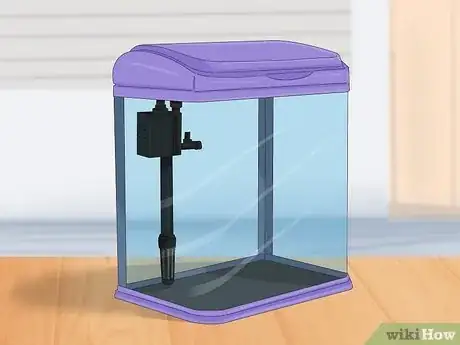





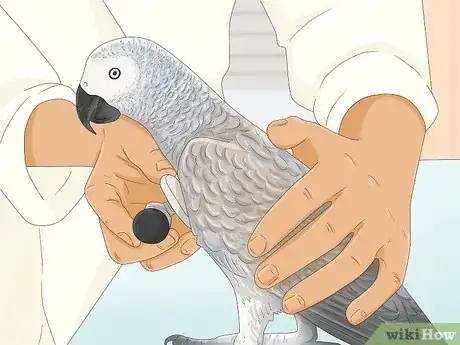
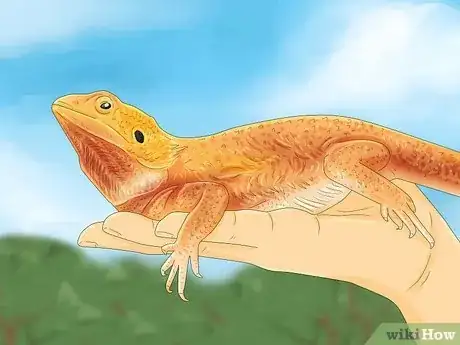




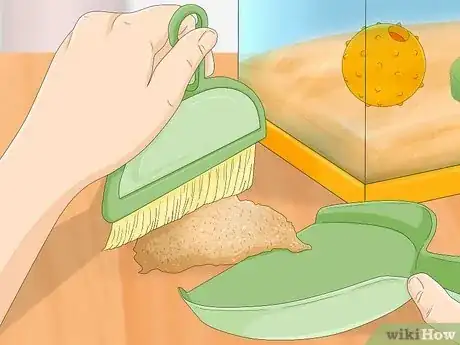
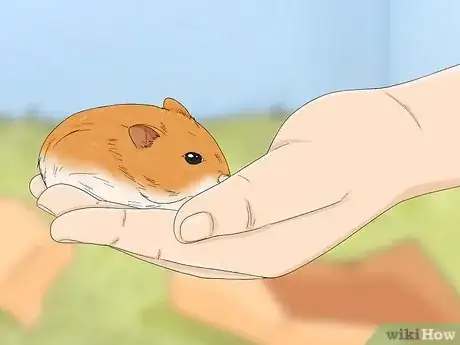

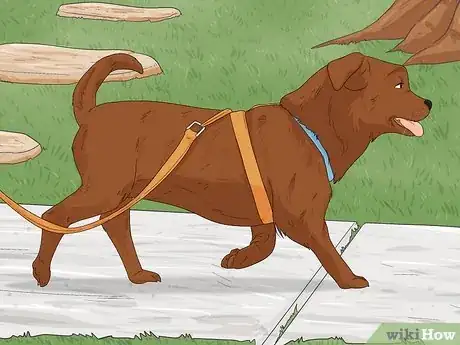















-Step-11-Version-2.webp)


-Step-10.webp)

















































